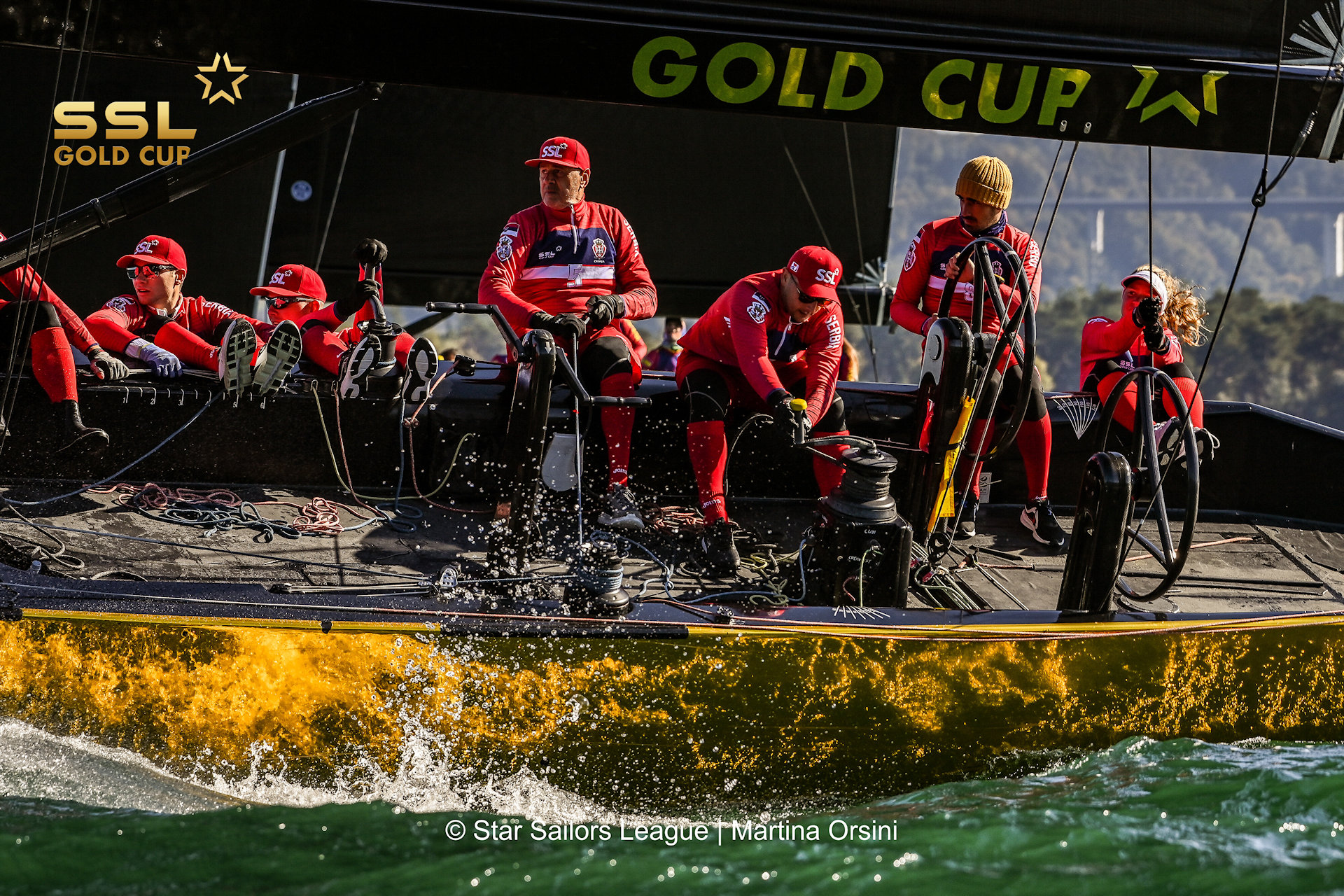Being a landlocked country, sailing in Serbia takes place on rivers and lakes in dinghies and small keelboats, so the leap to sailing the SSL47 yachts was a big one for many of the Serbian team. We spoke to Goran Stevanovic, the Captain of SSL Team Serbia, to find out how the team came together, and the positive impact it has had on sailing in the country.
There are only around fifteen active sailing clubs in Serbia, mostly in the north, with the majority being in and around the capital Belgrade, on the rivers Danube and Sava. The sailing is generally in river currents with shallow water, which restricts the types of boats which can be used.

Most young sailors grow up in dinghies, with the Laser / ILCA being popular as it is an Olympic class, and the Micro keelboat class, which is 5.5 meters long with a lifting keel.
“We have around 60 Micros in Serbia, but in regattas we generally have ten or twelve racing, with up to 20 for the National Championship,” said Goran. “They are still produced in Serbia, which is an advantage.”

The Micro class is very much a traditional keelboat, and recently Serbian sailors have been experimenting with the Beneteau Seascape 18 to gain experience with a modern-rig boat.
“I have one, and we are looking at building a small fleet in a similar way to the SSL concept, with four boats racing against each other in flights, as it makes a lot of sense,” explained Goran.
“We have three 18s in Serbia so far and are working on buying another one and creating a similar concept to the SSL Gold Cup. Building a new class is difficult but having a level playing field of the same modern, exciting boats gives us a platform for inter-club competition.”

Bringing together a team of dinghy sailors, many of them with only singlehanded sailing experience, was a huge challenge for Goran and SSL Team Serbia, but they were lucky to have two key Serbian sailors who had experience of the RC44 keelboats.
“Arsa Stefanov has over 20 years of big boat experience and is an RC44 boat captain, and Vladimir Švab is currently a bowman. Without these two guys, one knowing the boat inside out and the other being a really good bowman on larger boats, I don’t think we’d have had the confidence to apply for the SSL Gold Cup Qualifiers.”
These two sailors ended up as both working on board and coaching the dinghy sailors, showing them how the high performance SSL47 should be sailed.
“We all had some experience sailing on larger boats, but knowing how to do the manoeuvres, managing boat handling especially, and with the bowman role being such a critical one, were the key elements.”

Before SSL Team Serbia was formed, sailing was relatively fractured, with clubs generally keeping themselves to themselves and concentrating on dinghy sailing only, but the formation of the team galvanised cooperation, and has since led to a far more structured sport in Serbia.
“The Micros and big boats were never recognised as proper sailing in Serbia; the direction was solely focused on dinghies and Olympic classes, and everything else was a distraction. We had champion dinghy sailors who wanted to progress their careers in sailing, and we saw that keelboat racing was an area where this could happen alongside regular dinghy sailing.
“We don’t have big keelboats here in Serbia, so that was all done at a personal level as part of another team, which was the case with Arsa and Vladimir, who had almost turned keelboat sailing into their career. Finally, we saw the SSL Gold Cup as an opportunity to do big boat sailing as a Serbian team, and make this the basis for future development of keelboat sailing in Serbia, creating a natural progression for those leaving the Olympic classes, who we wanted to keep in the sport.
“I personally saw the SSL Gold Cup as a great way to promote sailing in Serbia, and promote Serbia in the world of sailing, even though we have limited resources and limited areas for sailing.
“So, the SSL Gold Cup Qualifier broadened the horizons of Serbian dinghy sailors and showed them that there were opportunities in sailing beyond the Olympic dinghy classes, and kept sailors in the sport, who may have otherwise left.

“Serbia has never had an Olympian in sailing, so it was easy to see why people gave up when they had put a lot of work and effort into a campaign, and hadn’t achieved their goal. They are still good sailors though, and we want to keep them in the sport. To bring up Olympic sailors we need everyone to stay in the sport, otherwise we lose such good talent. With the new keelboat classes, and developing a concept similar to the SSL Gold Cup, we can keep people in sailing.”
A lot of people in the country were interested by SSL Team Serbia competing in the SSL Gold Cup Qualifier, and Goran pulled current Olympic class sailors into training to give them some keelboat sailing experience. The campaign has given far more acceptance of yacht racing in Serbia.
“I really believe that if you sail on bigger boats, it can improve your sailing as you can see things from different angles, which you can’t in a dinghy, where you have to focus on so many things. It broadens your perspective, also on tactics and on boat handling, not to mention the teamwork, which some haven’t experienced at all.
“For me as team captain the biggest challenge was how to turn nine helmsmen into a functional team, focusing on what they could do better together, rather than on what they’d do differently in someone else’s role. It was great to see how the team clicked together and how they changed focus to asking others how they could improve their performance as part of the team. This would have never happened if it wasn’t for the SSL; the experience was so good for us all.”

The President and the Board of the Serbian Sailing Association has recently changed, with Goran now concentrating on international cooperation, and giving more focus on keelboat sailing and non-Olympic classes.
“It’s hugely important for increasing participation and extending the roots for sailing in Serbia. Previously the atmosphere within the federation was not that great, with a lot of clubs feeling that they were excluded, but now we have great people from all the clubs, and they are now all looking at ways that the clubs can work together. This experience has created some really positive energy and has really helped built momentum for cooperation.
“Some members of the board had never met each other before the SSL Gold Cup Qualifier, but thanks to SSL we have even brought back some people who had left sailing, who are now helping to grow the sport in Serbia. It has shown that it’s possible to cooperate and they’re all good people wanting to do the best for sailing.”
On the micro scale, the SSL brought a group of dinghy sailors together to make a team, and on the macro scale, the experience has brought the whole of Serbian sailing together, all now working together to increase participation.
“It wasn’t the original intention, but it’s the best result possible in the long term for sailing in Serbia. The experiment succeeded!” concluded Goran.
Focus on / Sailors / Regattas




